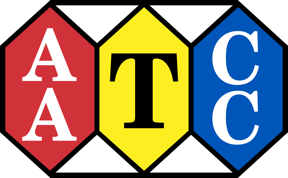Description
< p>TEST METHODS ARE DELIVERED AS A LINK IN YOUR EMAILED RECEIPT.
AATCC TM149-2023, Chelation Value of Aminopolycarboxylic Acids and Their Salts: Calcium Oxalate
< p>
1. Purpose and Scope
1.1 The active content of ethylenediaminetetraacetic acid (EDTA), N-hydroxyethylenediaminetriacetic acid (HEDTA) and diethylenetriaminepentaacetic acid (DTPA) and their salts is usually expressed by the calcium chelation value (CaCV). This value indicates the amount of calcium (as calcium carbonate) which will be chelated by a known weight of chelating agent.
2. Principle
2.1 The chelation value is determined experimentally by titrating a weighed sample of chelating agent with a calcium ion solution of known concentration. A precipitating anion (oxalate) is present during the titration. As the calcium solution is added, the ions are chelated by the chelating agent and no permanent precipitate is formed as long as there is free chelating agent present. Beyond this point, any excess calcium ion that is added reacts with oxalate anion to form a cloudy precipitate which is the endpoint. Ê
2.2 The (CaCV) indicates the amount of calcium (as calcium carbonate) which will be sequestered by a known weight of chelating and is expressed as milligrams of calcium carbonate (CaCO3) per gram of chelating agent (mg calcium carbonate/g chelating agent).
Copyright American Association of Textile Chemists and Colorists, RTP, NC, USA. All rights reserved.
The above information is only a summary of the AATCC test method.
English
Spanish
Hindi
Chinese (Simplified)
Chinese (Traditional)
Japanese
Bengali
Korean
Telugu
Marathi
Punjabi
French
Polish
Arabic
Danish
Dutch
Persian
Portuguese
Latin
Vietnamese
Hebrew
Hungarian
Indonesian
Irish
Italian
Kannada
Mongolian
Romanian
Russian
Norwegian
Serbian
Sindhi
Swedish
Tamil
Turkish
Ukrainian
Urdu
